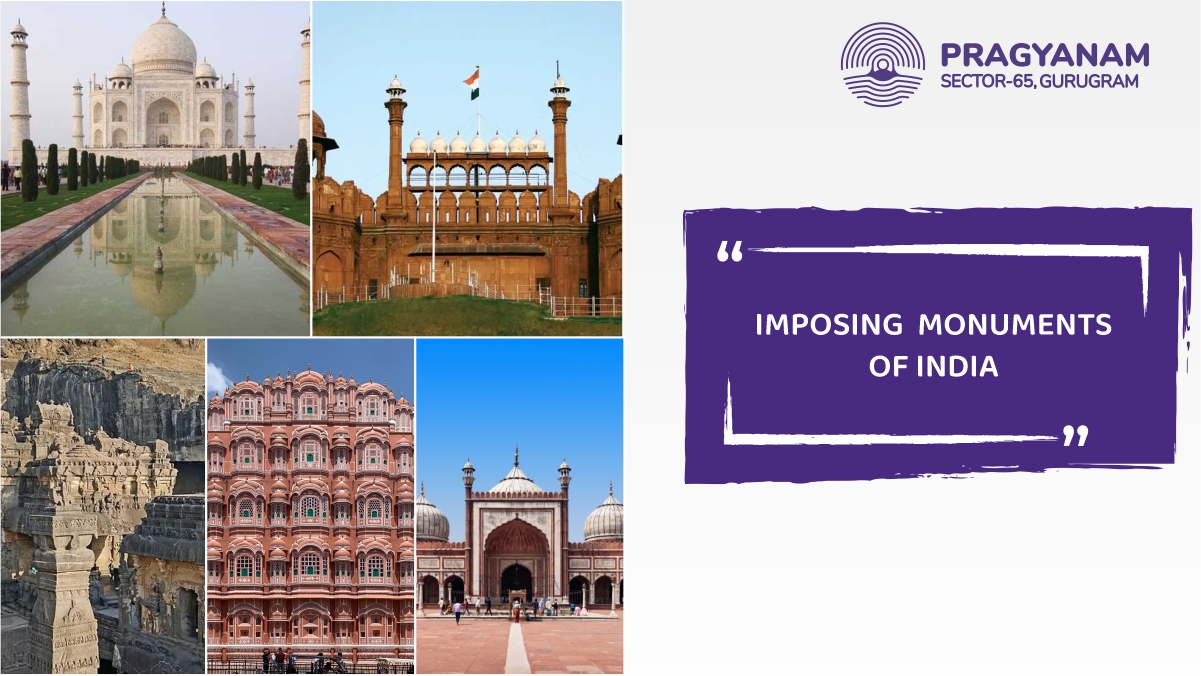India is a fascinating destination for travelers from across the world as well as Indians for a variety of reasons. The Spectacular Monuments of India is one of them. The stunning palaces, forts, minarets, temples, and cathedrals scattered around the country are a tribute to its rich cultural heritage. In addition to showcasing India’s artistic prowess, these architectural marvels convey a great deal about the country’s history, culture, and beliefs. As a result, one should visit these magnificent Indian sites at least once in their lifetime. Whether it is the Taj Mahal, an architectural marvel in white marble, or the splendor in red stone, the beautiful Red Fort, each of them is a witness to India’s history and architectural prowess. It is also a matter of great pride for India that there are as many as 42 Indian monuments that have been included as UNESCO World Heritage Sites in India.
The latest additions are the 12th-century Hoysala Temples of Karnataka, Santiniketan, West Bengal, Dholavira, Harappan City in the Rann of Kutch, and the Rudreswara Temple (Ramappan Temple) at Palampet, Warangal, Telangana.
Table of Contents
Let us look at some of the fascinating historical Important monuments of India and why they are a must-visit.
1. Taj Mahal, Agra
This magnificent work of art is situated in Agra on the Yamuna River’s southern bank. Constructed by the Mughal ruler, Shah Jahan, as a tribute to his spouse, Mumtaz Mahal, this architectural marvel is a masterpiece. An estimated ₹32 million was spent on building the facility, which employed about 20,000 craftspeople. Because it is “the jewel of Islamic art in India and one of the universally admired masterpieces of the world’s heritage,” the Taj Mahal was named a UNESCO World Heritage Site in 1983. This enormous tomb is a timeless symbol of love and an entire empire’s creative and scientific achievements. It ought to be among the historical sites you must see.
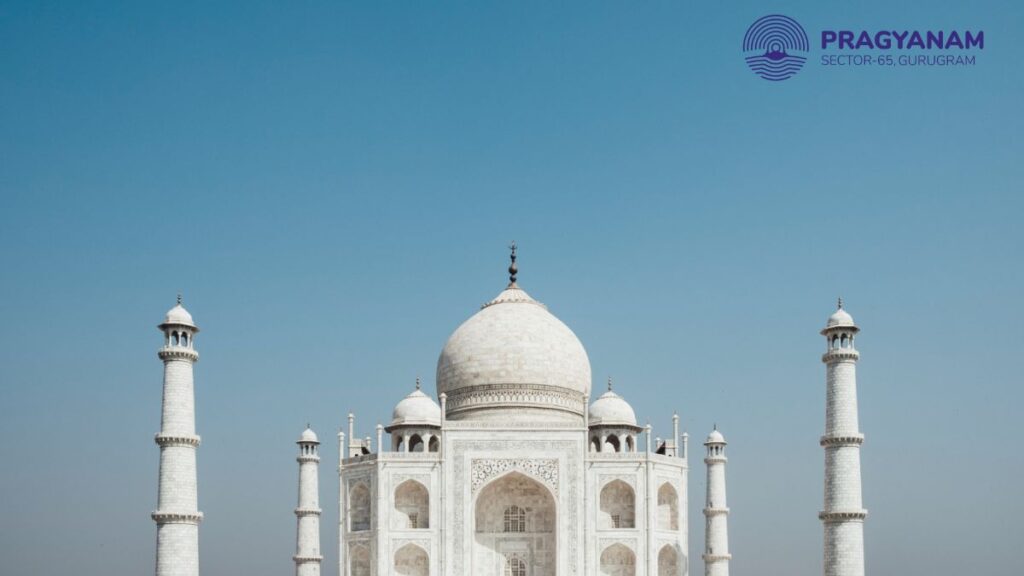
2. Red Fort, Delhi
A massive red sandstone fort located in the heart of Delhi, the Red Fort complex was built as the palace fort of Shahjahanabad – the new capital of the fifth Mughal Emperor of India, Shah Jahan. Its design is credited to architect Ustad Ahmad Lahori, who constructed the iconic Taj Mahal. The fort combines Persian palace architecture with Indian traditions. Among the most famous structures of the complex are the Hall of Public Audience (Diwan-i-ʿAam). Diwan-i-ʿAam has 60 red sandstone pillars supporting a flat roof, and the Hall of Private Audience (Diwan-i-Khas).
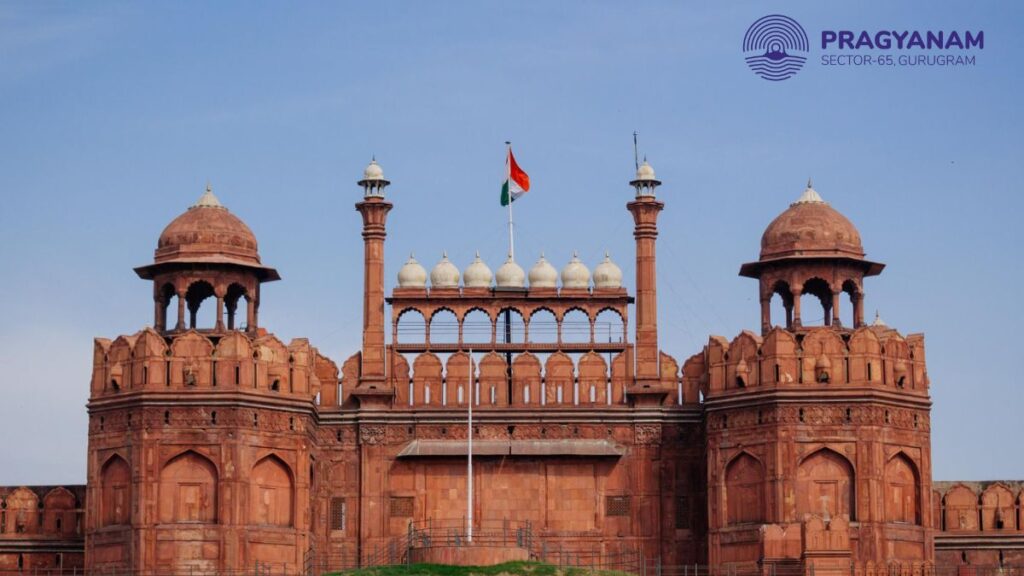
3. Hawa Mahal, Rajasthan
This is the Palace of the Winds, a five-story pink sandstone palace located in Jaipur. It was built in the 18th century by Maharaja Sawai Pratap Singh. The original intent of the lattice design was to allow royal ladies to observe everyday life and festivals celebrated in the street below without being seen. It is an architectural marvel, as seen in the fact that it allowed cool air to pass through, thus making the whole area extremely pleasant even during the high temperatures in summer.
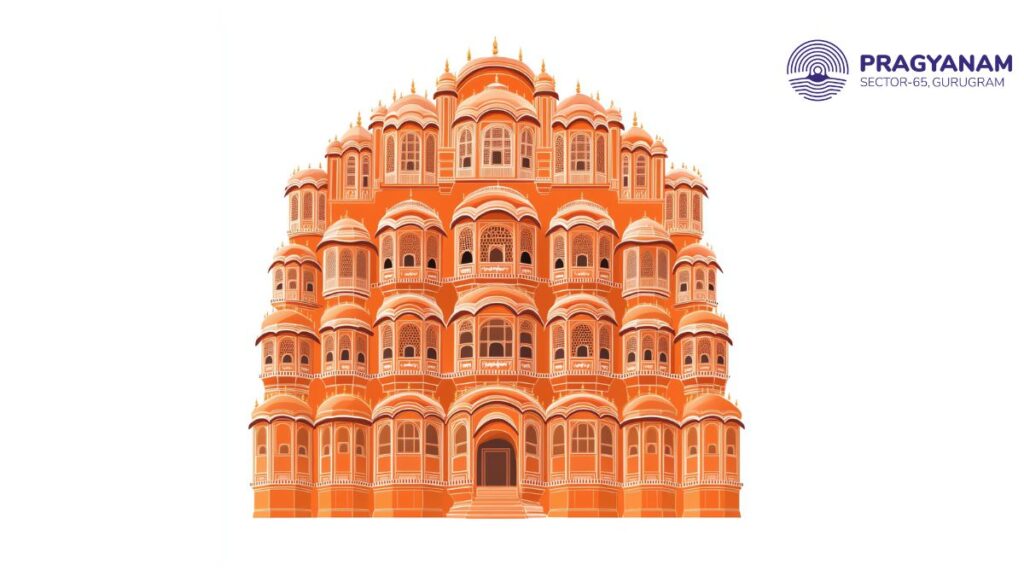
4. Jama Masjid, Delhi
Constructed between 1650-56 by Shah Jahan, it is the second-largest mosque in the Indian subcontinent. A 261-tall structure surrounded by a 30 m wide lawn, it is an impressive example of Mughal architecture and is among the famous monuments of India. Also known as the Masjid-i Jahanuma, the mosque attracts travelers from all over the world.
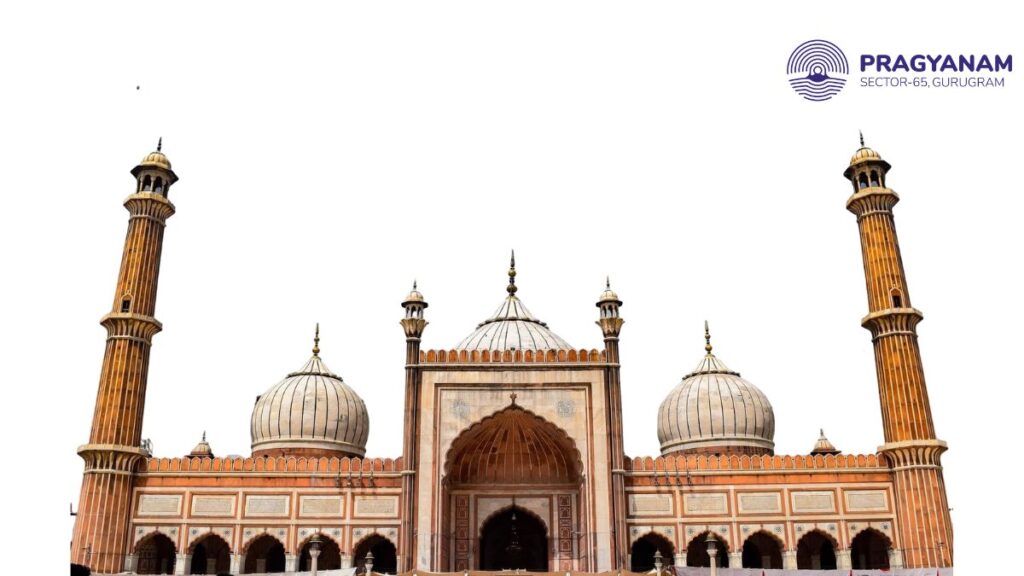
5. Qutub Minar, Delhi
A 73-metre-tall victory tower in Delhi, it was built by Qutb-ud-din Aibak, the first Sultan of Delhi, in the 12th century. Standing at an imposing 72.5 m high, the view of Delhi city from the top is impressive. It is an excellent masterpiece of Mughal architecture, ranging from 2.75 m in diameter at its peak to 14.32 m at its base, with its alternating angular and rounded fluting.
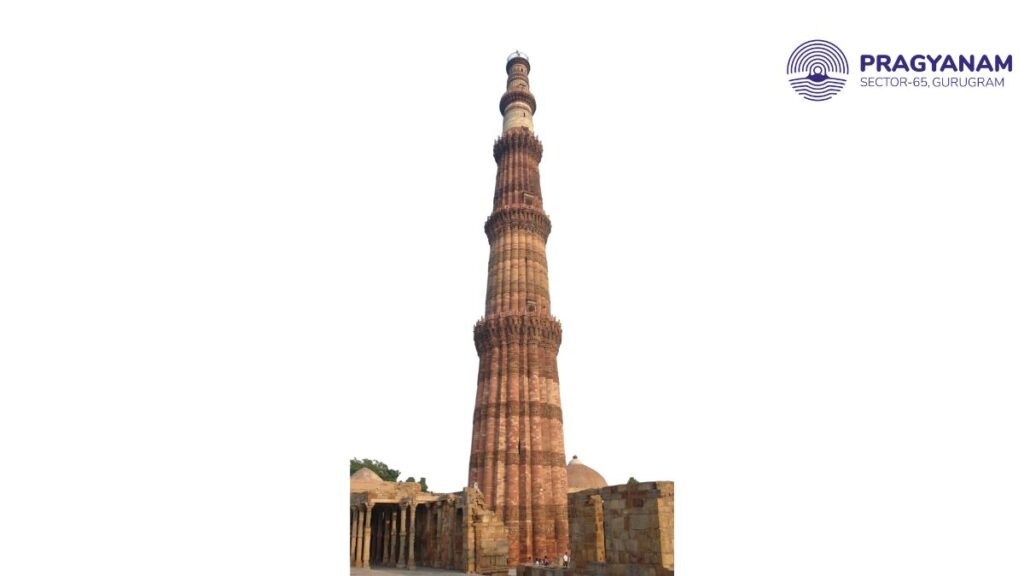
6. Ajanta & Ellora Caves, Maharashtra
Designated as a UNESCO World Heritage site, these two monumental rock-cut caves define Indian art and architectural accomplishment. While these two monuments are often mentioned together, they are located 100 Km from each other in the Aurangabad district of Maharashtra.
While Ajanta caves are known for the beautiful paintings made on cave walls on the theme of Buddhism, Ellora is known for its sculpture and architecture belonging to three different religions —Buddhism, Hinduism, and Jainism.
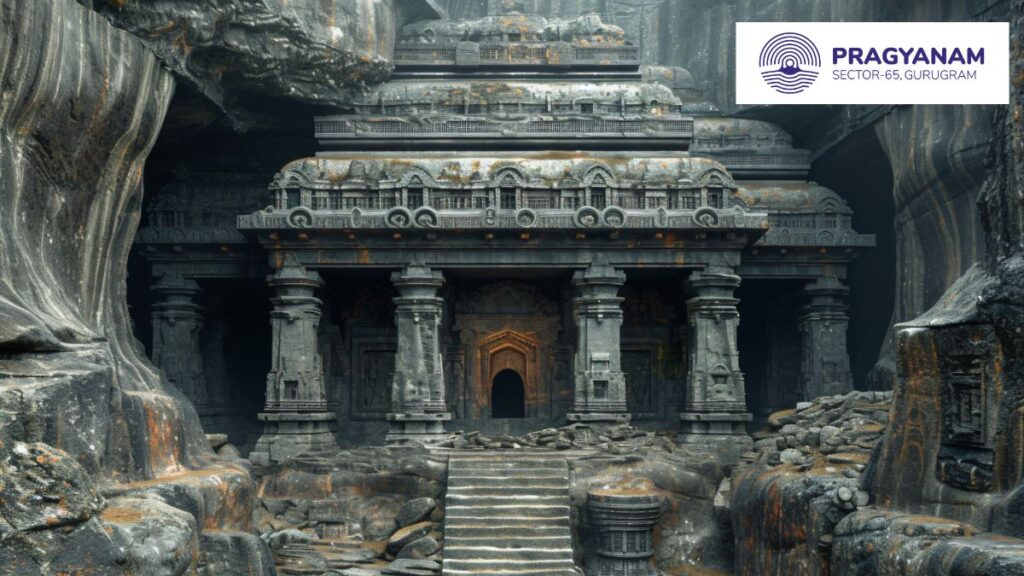
7. Konark Sun Temple, Odisha
A 13th-century Hindu Temple in Konark, Odisha, is dedicated to the Sun God. Known for its intricate carvings and sculptures, the temple is attributed to King Narasimha deva. The architectural highlight of the temple is its 100-foot-high chariot with wheels and horses, all carved from stone.
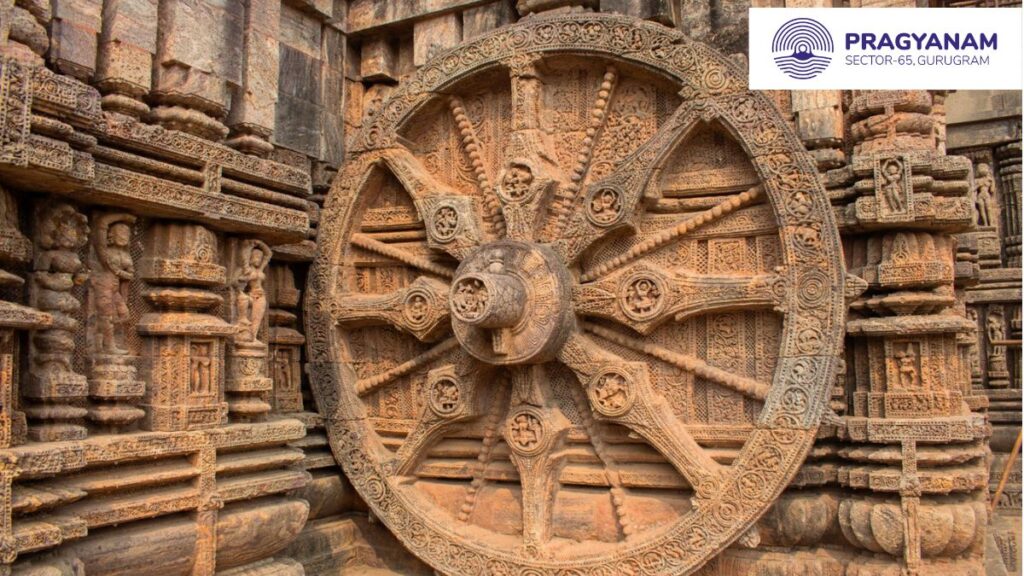
8. Golden Temple, Punjab
Also known as Harmandir Sahib, Golden Temple is the pride of Punjab. This imposing temple stands in Amritsar. It houses the Guru Granth Sahib, the most sacred book in Sikhism. The four entrances of this holy shrine from all four directions signify that people belonging to every walk of life are equally welcome.
During Maharaja Ranjit Singh’s reign, the central temple’s lower stories were adorned with white marble inlaid with designs made of precious gems. Its interior walls are decorated with frescoes and gold leaf decorations. The upper stories of the Golden Temple are overlaid with gilded copper panels.
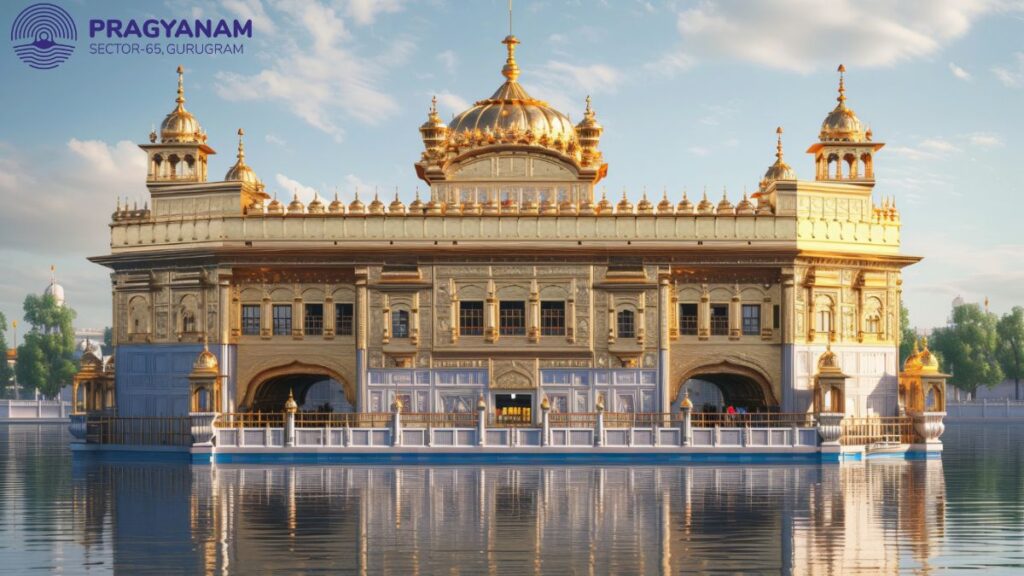
9. Gateway of India, Maharashtra
A famous monument of India built by the Britishers as an entry and exit point, the Gateway of India. Gateway of India in Mumbai stands at an imposing height of 26 m. The gate was built to commemorate the visit of Emperor George V, the first British monarch to visit India.
10. Victoria Memorial, West Bengal
An imposing structure built of white marble; it was constructed as a memorial for Queen Victoria of Britain. The white marble tower is situated in the middle of 64 acres of sprawling gardens in the heart of Kolkata. Architecturally, it reflects contemporary British civic classicism. However, it also incorporates Eastern references.
To Sum Up
Indian art, architectural motifs, and turbulent past are all reflected in and symbolized by the country’s monuments. Proceed and discover their enduring allure! As we continue to bring you glimpses of India’s splendor in all its forms, please stay tuned to this site for more. At Pragyanam, one of the top CBSE schools in Gurgaon, we try to pique children’s curiosity and educate them about India’s rich history.

